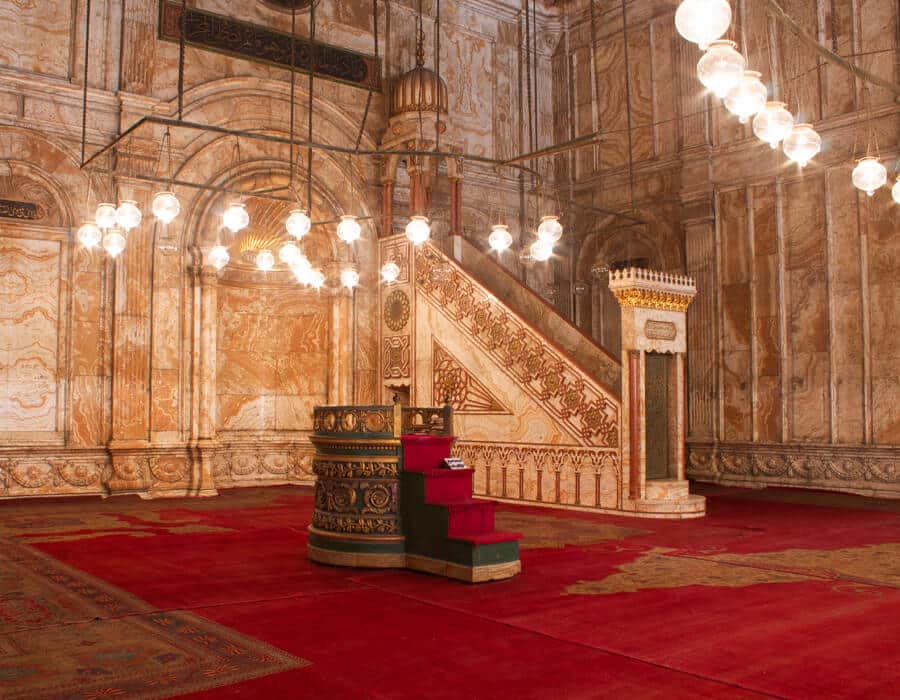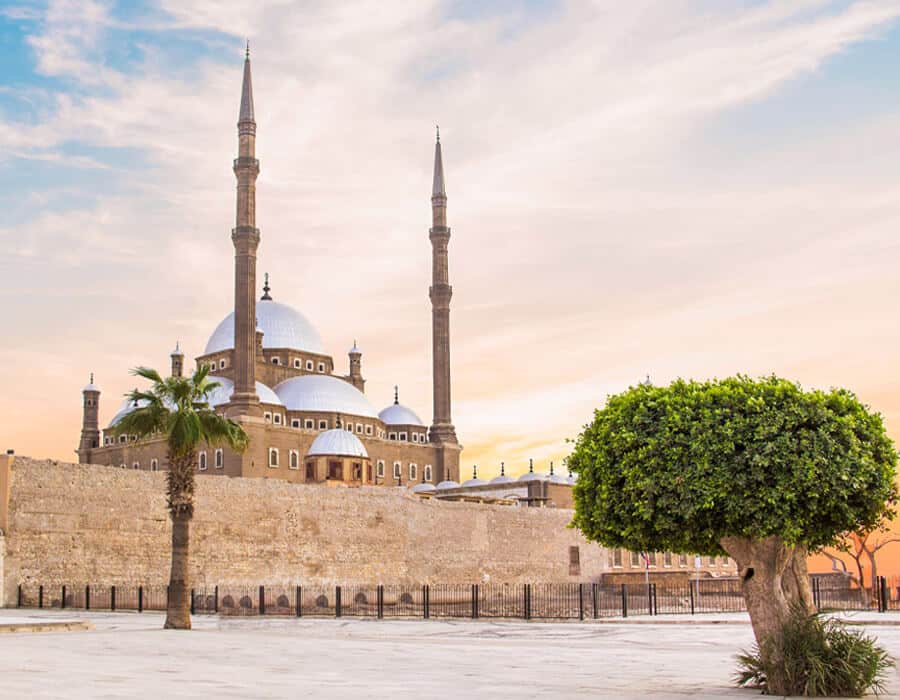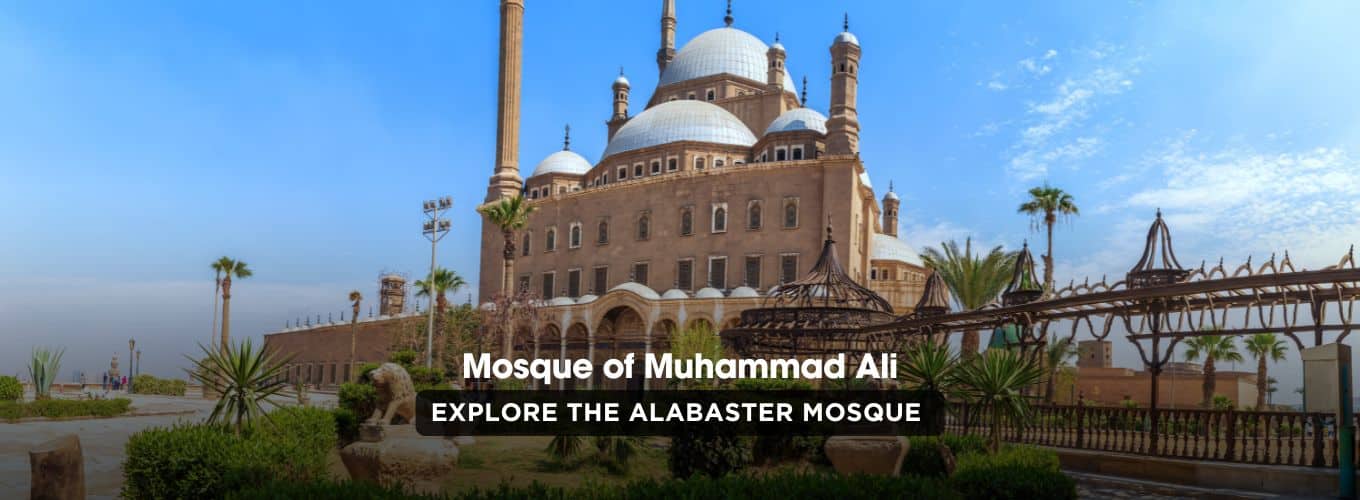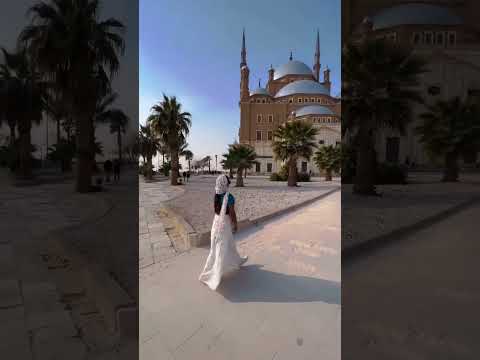Have you ever wondered what it feels like to stand inside one of Cairo’s most iconic landmarks? The Mosque of Muhammad Ali, with its stunning Ottoman-inspired architecture and breathtaking views of the city, is a must-see for anyone visiting Egypt. But what makes this mosque so special, and how can you experience it in the best possible way?
In this blog, we’ll guide you through everything you need to know about the Mosque of Muhammad Ali—from its fascinating history and architectural wonders to the best time to visit and tips for a memorable experience. Whether you’re a history enthusiast or simply looking to capture the perfect photo, this guide will help you make the most of your visit to one of Cairo’s most majestic sites. Let us take you through this unforgettable journey into Egypt’s rich cultural heritage!
Key Takeaways
- The Muhammad Ali Mosque is a famous spot in Cairo, Egypt, known for its Ottoman-style architecture.
- It was built in the 19th century by Muhammad Ali Pasha. The mosque has big domes, tall minarets, and detailed designs.
- It sits on the Citadel of Cairo and gives amazing views of the city. It’s a top spot for visitors.
- The mosque’s building and fixtures show Egypt’s changing history and culture over time.
- People can see the inside of the mosque. It’s filled with beautiful marble, alabaster, and more.
The Mosque of Muhammad Ali: An Introduction
The Mosque of Muhammad Ali is in the Citadel of Salah al-Din in Cairo. It’s a key example of Egypt’s Islamic architecture. It’s also called the “Alabaster Mosque.” Its tall minarets reach up to 84 meters, making it a famous spot in Cairo.
Location and Historical Significance
The Mosque of Muhammad Ali is in the Citadel of Salah al-Din, a historic area in Cairo. Muhammad Ali Pasha, who started the dynasty that ruled Egypt for 150 years, built it. Work started in 1830 and finished in 1848, after his death.
It was built where old Mamluk palaces once stood. This adds to its historical value. Its spot in the city shows its importance in the Citadel of Salah al-Din. This place is known for its landmarks and Islamic architecture in Egypt.
| Metric | Measurement |
| Coordinates | 30°01’43″N 31°15’35″E |
| Construction Period | 1830 – 1848 |
| Patron | Muhammad Ali Pasha |
| Prayer Hall Dimensions | 41m x 21m |
| Central Dome Height | 52m |
| Minaret Height | 84m (each) |
| Capacity | 10,000 individuals |
The Mosque of Muhammad Ali is a key landmark in Cairo. Its location and tall minarets attract visitors worldwide. They come to see its Islamic architecture and history.
Architectural Grandeur and Design Elements
The Mosque of Muhammad Ali is a stunning example of Ottoman architecture and Islamic architecture. It combines both styles beautifully. At its center, a big dome is surrounded by smaller ones and semicircular domes. This forms a square plan that is 41 x 41 meters.
The main dome is huge, with a diameter of 21 meters and a height of 52 meters. It’s a key part of Cairo’s skyline. Two tall, Turkish-style minarets stand beside it. Each has two balconies and a conical top, reaching 82 meters high.

Ottoman and Islamic Influences
The Mosque shows how Ottoman and Islamic styles came together. It has many domes and minarets, typical of Ottoman mosques. The symmetry and details show the beauty of Islamic architecture.
The architectural features, like the big domes and tall minarets, show Egypt’s independence. This was during a time when it was building the mosque.
| Architectural Feature | Measurement |
| Central Dome Diameter | 21 meters |
| Total Height of Mosque | 52 meters |
| Minaret Height | 82 meters |
| Courtyard Size | 54 x 53 meters |
The Construction Journey: Challenges and Controversies
The Muhammad Ali Mosque in Cairo, Egypt, had many challenges and debates. Its beauty showed Muhammad Ali Pasha’s wealth and power. But, religious leaders of the time opposed the project.
People said the mosque was too fancy, not simple enough for Islam. Using alabaster stone and limestone from the pyramids made things worse. They saw it as showing off wealth and power.
Yet, the mosque’s beauty is like that of other famous Middle Eastern mosques. It shows the rich style of Ottoman architecture. Building it took 18 years. It was fixed twice in the 1900s by King Fuad and King Farouk, costing 100,000 LE ($560 USD).
“The Muhammad Ali Mosque is an architectural masterpiece that showcases the opulence and grandeur of the Ottoman era, despite the controversies that surrounded its construction.”
The mosque showed Muhammad Ali Pasha’s big dreams and his wish to be independent from the Ottoman Empire. Having two minarets was a big deal, usually only for the sultan.
Building the Muhammad Ali Mosque was hard and faced a lot of criticism. But it became a famous and amazing place that draws visitors from all over.
Interior Splendor: A Feast for the Eyes
Stepping inside the Muhammad Ali Mosque is like entering a lavishly decorated sanctuary. Every detail captivates the senses. It’s a true feast for the eyes, showing the beauty of Islamic architecture.
Intricate Detailing and Decorative Elements
The mosque’s walls have verses from the Quran, adding beauty. The floors are stunning marble, making the place elegant. Colorful stained glass windows filter the light, making the space warm and magical.
Intricately patterned columns support the mosque, adding to its beauty. A big chandelier, given by the French government, hangs from the central dome. It casts a warm, inviting light.
| Decorative Element | Description |
| Walls | Adorned with verses from the Quran, showcasing the beauty of Islamic calligraphy |
| Floors | Made of stunning marble, creating a sense of elegance and sophistication |
| Stained Glass Windows | Surround the inside of the domes, filtering the light and casting a warm, ethereal glow |
| Columns | Intricately patterned, providing structural support and adding to the visual splendor |
| Chandelier | A magnificent centerpiece, gifted by the French government and suspended from the central dome |
The Muhammad Ali Mosque’s interior shows the amazing craftsmanship of Islamic architecture. Visitors are amazed by the details and decorations. They create a grand and peaceful atmosphere.
Visitor Information: Hours, Fees, and Dress Code
Visiting the Muhammad Ali Mosque in Cairo, Egypt, is a must for anyone interested in history and architecture. You should know about the mosque’s hours, Entrance fees, and the Dress code before you go.
The mosque welcomes visitors daily from 9 am to 5 pm. But non-Muslims can only see the main prayer hall from 9 am to 11 am and 1 pm to 4 pm. This rule helps keep the mosque’s prayer services uninterrupted.
Adults pay 200 Egyptian Pounds (about $6.50 USD) to enter. Students pay 100 Egyptian Pounds. Remember, these prices might change, so always check the latest info before you visit.
It’s key to follow the dress code at the mosque. You must keep your knees and shoulders covered. Women, make sure your hair is covered with a scarf. And don’t forget to take off your shoes before going into the prayer hall.
Keep these tips in mind for a respectful and fun visit to the Muhammad Ali Mosque.
Tips for Exploring the Muhammad Ali Mosque

When you visit the famous Muhammad Ali Mosque in Cairo, Egypt, remember these tips for a great trip.
Navigating the Site
First, get ready for security checks. Your bags will be scanned and searched before you go in. This keeps everyone safe.
It’s smart to pack lightly to avoid extra trouble. Having a translation app on your phone is also a good idea. It helps with signs and talking to staff or other visitors.
Making the Most of Your Visit
- Bring your own water and snacks, as the vendors near the mosque tend to have inflated prices.
- Explore the mosque’s open courtyard and take in the panoramic views of Cairo from the elevated position of the Citadel.
- Observe the mosque’s impressive architectural elements, including the massive central dome and towering minarets.
- Admire the intricate details and decorations that showcase the mosque’s Ottoman and Islamic influences.
Keep these tips in mind to enjoy your visit to the Muhammad Ali Mosque. You’ll have a great time at this famous Egyptian spot.
The Mosque of Muhammad Ali: A Timeless Masterpiece
The Muhammad Ali Mosque is a key part of Cairo’s culture and history. It’s a mix of Ottoman and Islamic design. The mosque’s tall minarets and big domes make it a standout in the city.
It took 18 years to build, from 1830 to 1848. Mohamed Ali Pasha had a clear vision for it. The mosque combines Eastern and Western styles, making it famous in Egypt.
Inside, you’ll see amazing details and decorations. The walls glow with alabaster, making it beautiful. At the center, a big dome is surrounded by four smaller ones with cool patterns.
The mosque has two tall minarets that give great views of Cairo. You can see the Nile River and the pyramids of Giza. There’s also a tomb for Mohamed Ali Pasha inside.
This mosque has changed Islamic architecture in Egypt. It mixes Ottoman and European styles in a beautiful way. Its beauty and history make it a key spot in Cairo, loved by people worldwide.
Cultural and Historical Significance of the Mosque
The Muhammad Ali Mosque is a key part of Egypt’s rich culture and history. It was built from 1830 to 1848 by Muhammad Ali Pasha. This mosque showed Egypt’s independence from the Ottoman Empire with its beautiful design.
The mosque mixes Ottoman and Islamic architectural styles. Its size and beauty have influenced Islamic architecture in the area. It’s a famous spot that shows Egypt’s culture to the world.
Influence on Islamic Architecture
The mosque’s design has inspired many Islamic buildings in the Middle East. Its unique minarets, beautiful domes, and detailed interiors are well-known. These features have been copied by architects.
Building the mosque took about 20 years. It shows the skill of the time. The use of alabaster, a rare stone, made the mosque even more stunning.
| Architectural Element | Influence on Islamic Architecture |
| Minarets | The mosque’s tall minarets, 82 meters high, are a key part of Islamic architecture. |
| Domes | The main dome and four smaller ones have inspired many mosques. They show the mosque’s size and design skill. |
| Interiors | The mosque’s detailed woodwork, chandeliers, and colorful carpets have raised the bar for Islamic interior design. |
The Muhammad Ali Mosque is very important culturally and historically. It’s a symbol of Egypt’s architecture and culture. Visitors from all over the world are drawn to it, making it a famous landmark in Cairo.
Capturing the Essence: Photography and Memories
The Muhammad Ali Mosque in Cairo is a dream spot for photographers and visitors. Its stunning architecture, tall minarets, and beautiful domes offer endless photo ops. Whether you’re taking pictures at sunset or inside, photography at the Muhammad Ali Mosque is rewarding.
The mosque’s calm vibe and views of Cairo from the Citadel make memories last. Capturing the mosque lets visitors keep the beauty of this place alive. They can share their visitor experiences with others.
When taking photos at the Muhammad Ali Mosque, remember the dress code and photo rules. This way, you can take great pictures and respect the mosque’s importance.
“The Muhammad Ali Mosque is a true feast for the eyes, both inside and out. It’s a place that inspires awe and wonder, and I feel lucky to have had the chance to capture its essence through my camera lens.”
Whether you love photography or just want to remember your mosque visit, the photography at the Muhammad Ali Mosque is unforgettable. The mosque’s stunning architecture, deep history, and peaceful feel show the beauty of Islamic art and design.
Conclusion: An Icon of Cairo’s Skyline
The Muhammad Ali Mosque is a key landmark in Cairo’s skyline. It shows the beauty of Islamic architecture and Egypt’s deep history. Its design mixes Ottoman and Islamic styles, standing tall on the Citadel.
Visitors from all over the world are amazed by it. It shows Egypt’s fight for freedom and the dream of its leader. The mosque is a top spot for both religious and cultural visits.
Its tall domes and thin minarets are a big part of Cairo’s skyline. People can see it from many places in the city. The mosque’s beauty shows the hard work and skill of its creators.
It’s a symbol of Egypt’s long history and culture. The Muhammad Ali Mosque is a living piece of Egypt’s heritage.
When people visit, they see a mix of history, faith, and art. The mosque is a key symbol of Cairo. It shows the city’s lasting cultural value and its power to touch people’s hearts.
Read our related articles:

